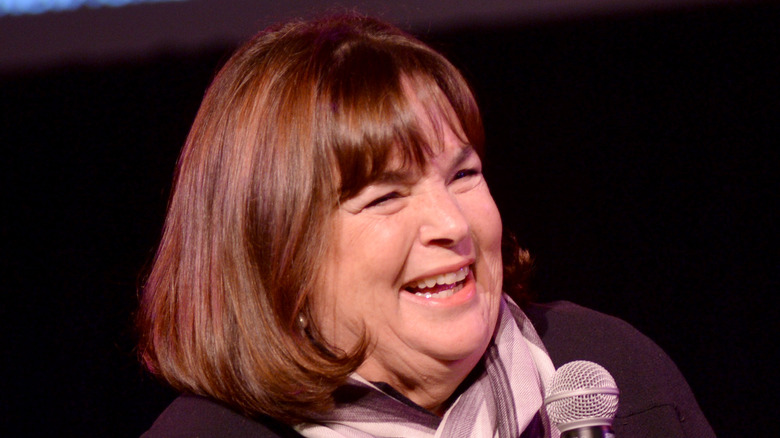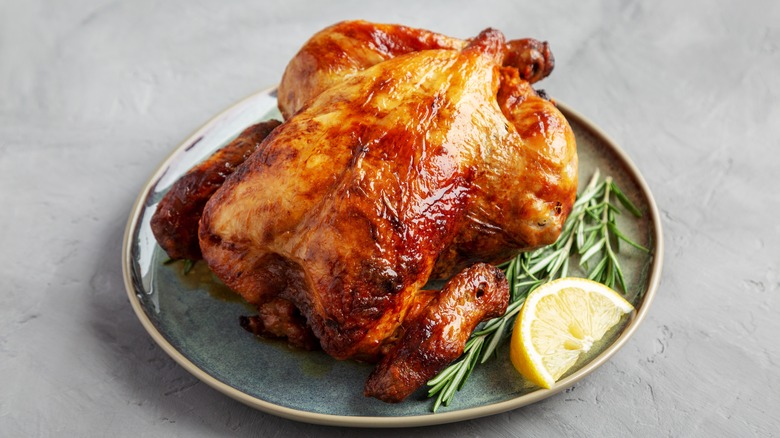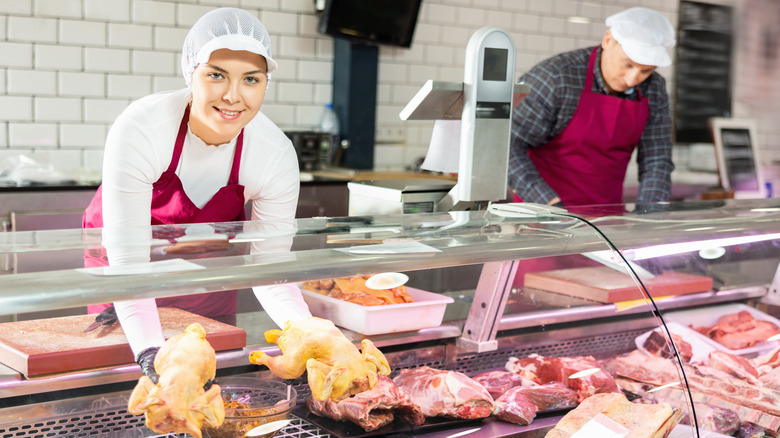Why You Should Only Buy Small Chickens, According To Ina Garten
Planning a roast chicken dinner? The always-excellent Ina Garten has a hot tip for you: A bigger chicken is not necessarily better. Garten has gone on the record to argue that smaller chickens have tastier, more tender meat most of the time. Plus, they're easier to roast. While you might think a smaller bird would be easier to overcook, the opposite is the case. It can be difficult to roast large chickens, mostly due to the extra time needed to cook the meat the whole way through; which can result in some parts drying out in the oven, particularly the breast meat.
On an episode of her Food Network show "Cook Like A Pro," Garten indicated that her ideal chicken should weigh no more than 5 pounds. Of course, you don't have to aim for the smallest possible bird — 1-pound whole chickens do exist, like Cornish hens, for example. However, these will only be useful as a single portion. So, Garten's recipe for her perfect roast chicken suggests going for a 4-pound option (well-seasoned inside and out with salt and pepper, and stuffed with lemon, garlic, and thyme, if you're wondering how to prepare it). The only catch is that smaller chickens won't feed large crowds, so to serve six to eight dinner guests, you may need two of them.
The evidence for small chicken supremacy
Ina Garten's views on smaller chickens aren't a mere personal preference — there's science and culinary expertise to back those views up. For example, larger chickens are prone to a condition called "woody breast," which occurs when the animals grow at an unnaturally fast rate. The physical stress of rapid growth results in the breast meat having more collagen and fat, and less protein. Just as the name suggests, this results in a woody, fibrous, and tougher texture when you're eating the meat (but this only occurs in the breasts, not in other parts like the thigh). It's not an isolated problem, either — as much as 30% of the U.S. chicken supply may have this condition, according to Today. Smaller, organic, and free-range chickens are all considered less likely to have this unpalatable condition, while commercial, mass-farmed chickens are more prone to it. It's not particularly easy to detect woody breast on sight (pale meat is one sign of it, though), but you can try poking the meat. If it's on the firm side, it may be woody.
There's also a biological reason for smaller chickens being more tender: Younger birds that aren't fully grown have generally worked their muscles less, making their meat more tender. Plus, professional chefs beyond Garten also note that it's easier to season a smaller chicken since the salt can seep through the whole bird more easily.
Sourcing your small chickens
If you want to make like Ina Garten, be warned that shopping for these smaller chickens is not always an easy task. Farmers can profit more from bigger chickens — since they're sold by weight, an 8-pound bird brings in more money than a 4-pound one without much in the way of extra work. As a result, bigger birds are now much more common in North America. On top of that, some supermarkets have also decided that smaller birds don't make as much economic sense, leading them to also prioritize larger chickens. Some farmers also suggest that supermarkets focus on factory-farmed chickens, which are more prone to woody breasts.
Obviously, you can just look at the weight on the label and aim for something under 5 pounds. But there are also some useful terms to know: Game hens are the smallest and youngest birds around, and max out at around 2 pounds. "Broiler" or "fryer" chickens are up to seven weeks old and are usually under 5 pounds, while "roaster" chickens are older and heavier than this (and per Garten's advice, not ideal). If you're going directly to a farm or a butcher, these terms may come in handy. These kinds of retailers may be your smartest move, too, as supermarkets continue moving away from stocking small chickens.


